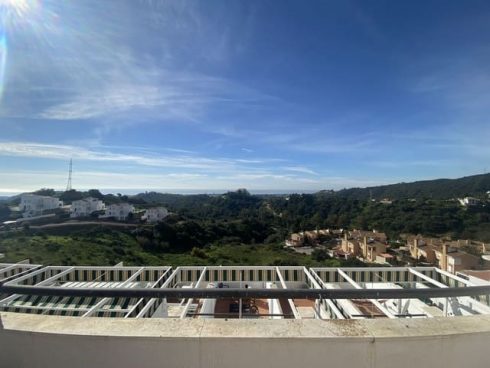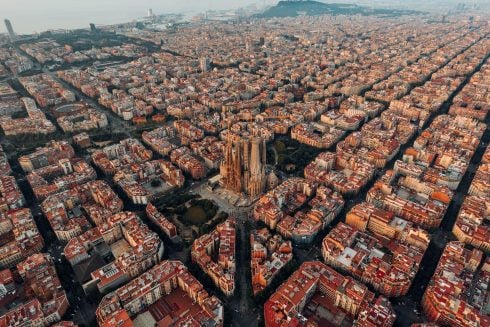CÁÑAR, a mountain village in the Alpujarra of Granada, is attracting international attention for its restoration of acequias, a network of water channels created by the Moors in the Middle Ages, over 1,000 years ago.
Now, lost acequias are being excavated and restored to life, to combat the effects of climate change and prevent desertification.
Without acequias, snowmelt from the Sierra Nevada peaks would flow directly into rivers and lakes that run dry during summer months. Already, many of Spain’s reservoirs are at a critical level, because of the continuing drought, and some parts of Malaga are seeing water restrictions.
Thanks to acequias, the snowmelt is diverted through the ancient channels, winding through the mountains, and irrigating the terraced slopes. Acequias enable farmers to grow crops in what would otherwise be impossible terrain. After the water is diverted from acequias and is absorbed into the ground, it eventually joins the underground aquifers and emerges through springs, downslope, a few months later.
In the 1960s, many acequias fell into disuse, because Spain built modern reservoirs and encouraged people to migrate from rural areas for cities. This affected a vast network of acequias across the Granada and Almeria provinces. It is estimated that a fifth of the channels were abandoned.
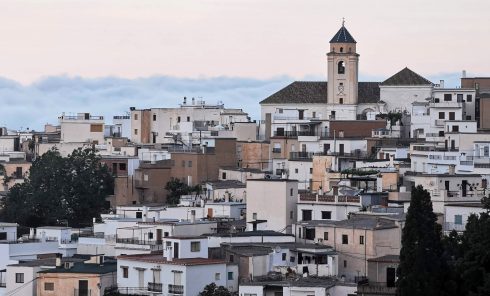
Cáñar is restoring its acequias
In Cáñar, disused acequias are being revived, through a project that started in 2014 and is now attracting international attention. The New York Times recently reported on the village’s acequia renovation (the US has acequias in San Francisco and New Mexico). Researchers from France, Switzerland, Finland, and South America are visiting the project, and regions in the north and east of Spain are copying it.
Alejandro Esteban Alvarez, water historian and ex-president of the Cáñar water committee, allocates the supply across 520 hectares of land. He explains that water goes though the ground to fill the high mountain springs, through a traditional system of water infiltration in permeable areas of the mountain, historically carried out by humans and known as the system of ‘careos’ (confrontations).
If there’s water from November to May or June, there’s enough for the crops and replenish the aquifers. In 1994-95, it didn’t rain, and the town water supply was turned off between 11pm and 8am. He explains that this is unlikely this year, thanks to the efficient acequia system and the practical system of ‘careos’. Cañar has three ‘depositos’, one of which holds millions of litres, keeping the taps running.
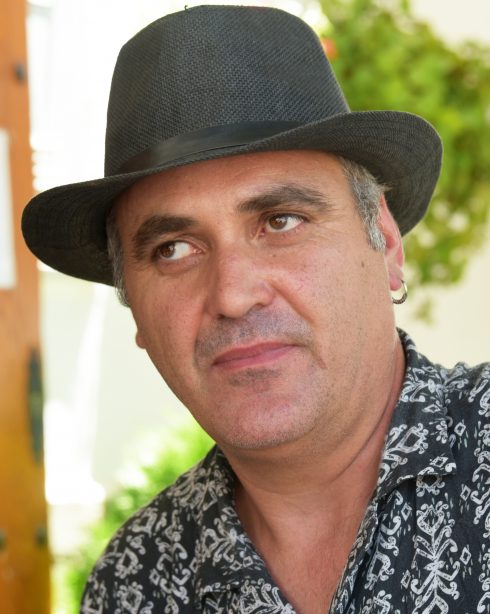
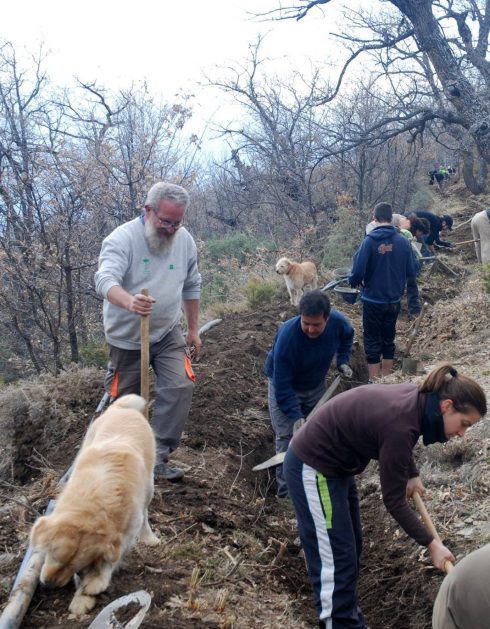
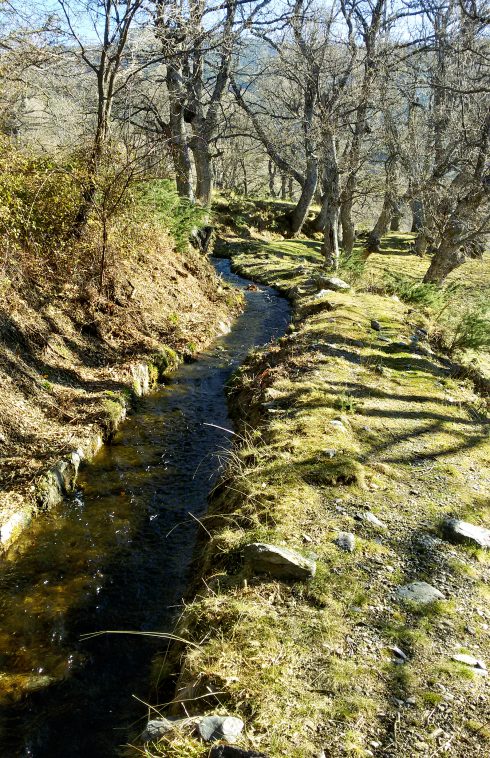
Some other municipalities aren’t so lucky. Nearby La Taha has restricted the use of tap water from its ‘deposito’ to fill swimming pools, wash cars and walls, and water gardens. The hosepipe ban isn’t affecting people with ‘cortijos’, whose supply is acequia-derived.
“If there’s a shortage of water, it’s important to have the rights to acequia water to prevent wasting tap water needlessly,” explains Alejandro.
In the Alpujarran spa town of Lanjarón, the multinational company, Danone – which owns the Aguas de Lanjarón brand – has the right to bottle water from wells and the river, regardless of drought. Just up the road towards Granada, Villamena, near Humedal and the Turberas of Padul (in Lecrin Valley), has granted a 25-year permit for a water bottling plant that will extract 252m litres of water a year. A petition against it has gathered 33,000 signatures. The bottling process can deplete the underground aquifers, says Alejandro.
The problems in Malaga
As for large towns and cities, some are better-resourced than others. South of Granada, Velez de Benadualla has its own spring, while Motril and Salobrena take water from the Lecrin Valley and Guadalfeo River. They don’t rely solely on the region’s depleting reservoirs.
Some of the worst-hit parts of Malaga aren’t so lucky. The Vinuela reservoir has dipped to 8.8%. As a result, the municipality has cut the supply between 11pm and 7am, to save 19% of water consumption. The worst hit town, Iznate currently has no tap water from 10pm until 10am, which is unfortunate for those needing a shower before work or bed. Other nearby towns have less severe overnight restrictions.
Alejandro says: “Intensive agriculture using wells is a problem as it takes many litres and empties the aquifer. Illegal wells are hidden all over the ‘campo’. According to reports, 30-40 people have been denounced at Vinuela. Soon, the authorities will need to ship water in lorries. They bring it from another town.”
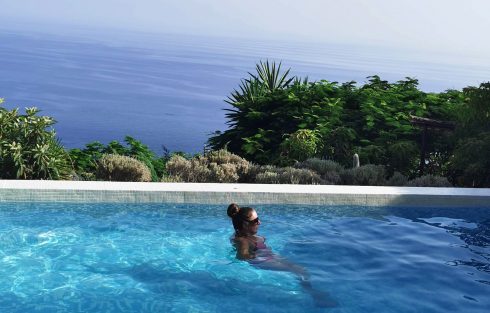
Recycling water
Towns such as Cáñar, and other mountain villages, have set up purifying facilities. These take drain water and clean it for irrigation, although it isn’t suitable for drinking. The EU offers grants for purification schemes. “It’s a good investment, as is desalination, if it doesn’t rain,” says Alejandro.
Locally, there’s some fear and discontent about climate change. Alejandro says: “The temperature is higher, which is odd in winter. Before, the snow came to 1,800m for a week or more and now it’s at 2,500m. It used to fall in the town, 25 years ago, and it was much colder. The old people can see a change that they didn’t imagine. We have spring in winter, before snow in June, storms in August. It’s very strange, what has happened during the last decade.”
Cáñar is fortunate to have its 36.5km of acequias, maintained by landowners with historical rights to use the water from these channels, to minimise the changing weather patterns.
“The landscape, biodiversity and population are linked to the acequias,” says Alejandro, “the animals, plants, and trees. If it wasn’t for the acequias, it would be like a desert. If there aren’t trees, the land erodes faster. Then, the water disappears quicker. Here, the water circulates all year instead of disappearing in two months, downstream.”
- READ MORE
- Donana’s biggest lagoon in Spain’s Huelva dries up for second year in a row making unprecedented occurence
- Olive oil prices rocket to sky high levels as olive harvests get ravaged by drought across Spain
Click here to read more Granada News from The Olive Press.





